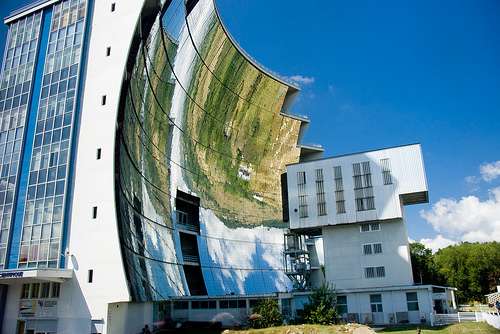Civic Report: A Highly Productive Place
Knowledge, resources and people diffuse across boundaries to create connections between the EBD and the greater City of Melbourne.
EBD is a highly productive and generative force within Melbourne. Every year more renewable energy is produced on site, more food grown, more water captured, treated and (re)used (see Energy and Water for more details). These systems of production contribute significantly to the super-low resource consumption of EBD, but it’s important to remember that the site does not operate independently from the larger public infrastructure of Melbourne, Victoria and Australia.
It has taken more than a decade to change the perception of EBD as some kind of island development, even though, from the start, the district was so clearly integrated in its productive capabilities with the interconnecting public infrastructure. Energy produced on the site has always been fed back into the national grid and much of the water used on-site is treated in wetlands and then fed back into the Moonee Ponds Creek catchment. Some food grown on site travels to other (nearby) Melbourne areas to be sold or preserved, just as food has always come into the site from elsewhere in Melbourne and beyond.
The ‘vision’ for EBD, from its far-sighted inception by the State government, was that its value as a development for Victoria would derive from its role in stimulating new eco-innovation businesses as well as from its direct contribution to meeting the State’s energy, water and greenhouse targets. In less than 15 years EBD has become a net exporter of zero-carbon energy and usable water.

In less than 15 years EBD has become a net exporter of zero-carbon energy and water.
EBD’s productive qualities are also displayed in the number of new businesses that have been developed locally (see New Industries for more details) and in the commercialisation of many technologies, systems and life-style services that have been developed within EBD. There has also been great academic research and interest in the site and its community, focused through the work of the ACUR. Many important research initiatives have derived from ACUR and there are always many visiting academics from around the world. This, along with industry and government visitors to the site organised through the ACUR programs, has been significant in economic and reputational terms for the State, particularly in its first decade of occupation. The number of visitors to the district grew steadily through the early years: people came to experience the life, the local EBD food produce, and so on, taking ideas back to their communities for low-consumption living that could be adopted or adapted.
Knowledge diffuses in many ways.